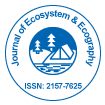开放获取期刊获得更多读者和引用
700 种期刊 和 15,000,000 名读者 每份期刊 获得 25,000 多名读者
索引于
- CAS 来源索引 (CASSI)
- 哥白尼索引
- 谷歌学术
- 夏尔巴·罗密欧
- 在线访问环境研究 (OARE)
- 打开 J 门
- Genamics 期刊搜索
- 乌尔里希的期刊目录
- 访问全球在线农业研究 (AGORA)
- 电子期刊图书馆
- 参考搜索
- 哈姆达大学
- 亚利桑那州EBSCO
- OCLC-世界猫
- SWB 在线目录
- 虚拟生物学图书馆 (vifabio)
- 普布隆斯
- 日内瓦医学教育与研究基金会
- 欧洲酒吧
有用的链接
开放获取期刊
分享此页面
抽象的
YES as a Tool for Detecting Estrogenic Activity of Some Food Additives Compounds: E 104, E 122, E 124, E 132 and E 171
Ingrid Bazin, Aziza Ibn Hadj Hassine, Wissem Mnif and Catherine Gonzalez
The toxicity (mutagenic and carcinogenic effects) of food dyes (used like food additive) has been well documented. However the endocrine disrupting effects of these dyes have been poorly investigated. We studied five commercial food dyes for their agonistic estrogen activity and do a comparison with estrogenic activity of some paraben (other food additives compounds). Total estrogenic activities were measured using the Yeast Estrogen Screen bioassay (YES). The estrogenic potency of the food dyes was measured by dose-response curves and compared to a doseresponse curve of 17-β-estradiol (E2), (reference compound). Estrogen EC50 values have been calculated using standard linear regression methods. Among these compounds, three food dyes, indigotine (E 132), the monoazo dye Ponceau 4R (E 124) and the inorganic dye titanium dioxide (E 171), revealed weak estrogenic activity. Negative results were obtained for Quinoline Yellow (E 104).

 English
English  Spanish
Spanish  Russian
Russian  German
German  French
French  Japanese
Japanese  Portuguese
Portuguese  Hindi
Hindi